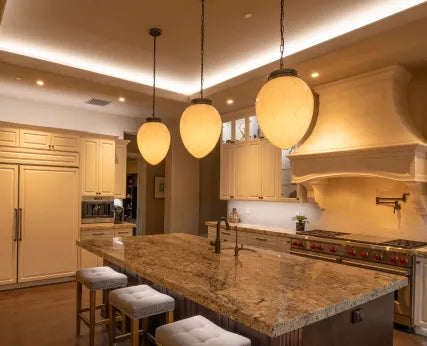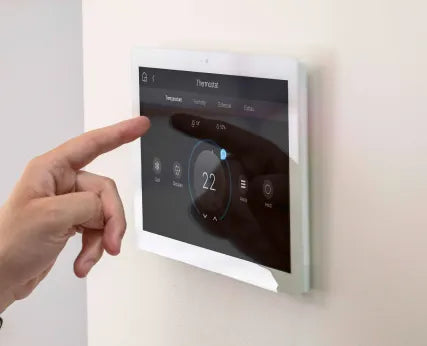The Ultimate Guide to Choosing a Smart Home System in 2025
Smart homes are no longer a futuristic concept reserved for tech enthusiasts with deep pockets. As we enter 2025, connected devices have become more affordable, reliable, and user-friendly than ever before. Yet with countless options flooding the market, selecting the right smart home system can feel overwhelming.
Whether you're a first-time buyer looking to automate a few basic functions or a tech-savvy homeowner ready to create a fully integrated ecosystem, this comprehensive guide will help you navigate the complex world of smart home technology. We'll break down everything from compatibility considerations to budget planning, ensuring you make an informed decision that enhances your daily life without breaking the bank.
By the end of this guide, you'll have a clear roadmap for choosing a smart home system that perfectly aligns with your lifestyle, technical comfort level, and long-term goals.
Understanding Smart Home Systems: The Smart Buildings Foundation
A smart home system is essentially a network of connected devices that can communicate with each other and be controlled remotely through a central hub or smartphone app. These systems range from simple setups with a few smart bulbs and a thermostat to sophisticated networks managing everything from security cameras to automated window blinds.
The key components typically include a central hub or controller, various smart devices (lights, locks, sensors, etc.), and a mobile app or voice assistant for control. Modern systems often integrate with popular platforms like Amazon Alexa, Google Assistant, or Apple HomeKit, creating seamless voice control experiences.
What sets today's smart home systems apart from earlier versions is their improved reliability, enhanced security features, and significantly better interoperability between different brands and device types.
Key Factors to Consider When Choosing Your System
Compatibility and Energy Efficient Integration
The most critical decision you'll make is choosing which ecosystem to build around. The three major platforms each offer distinct advantages:
Amazon Alexa dominates the market with the widest device compatibility and extensive third-party integrations. If you want maximum flexibility and the largest selection of compatible devices, Alexa-based systems offer the most options.
Google Assistant excels at natural language processing and search capabilities. Google's ecosystem integrates seamlessly with Android devices and offers superior voice recognition, making it ideal for households heavily invested in Google services.
Apple HomeKit prioritizes privacy and security above all else. While it supports fewer devices, those that are compatible meet Apple's stringent security standards. HomeKit works best for households already using multiple Apple devices.
Budget Smart Home Hubs Planning and Scalability
Smart home systems can cost anywhere from $200 for a basic starter kit to several thousand dollars for comprehensive whole-home automation. Start by identifying your must-have features and build from there.
Entry-level systems typically include smart lighting, a thermostat, and basic security features. Mid-range setups add smart locks, security cameras, and more sophisticated automation routines. Premium systems incorporate advanced features like motorized blinds, whole-home audio, and professional-grade security monitoring.
Consider how you want to expand over time. Some systems make it easy to add devices gradually, while others work best when implemented as complete solutions from the start.
Technical Home Security Requirements and Installation
Assess your home's technical infrastructure before making any purchases. Most smart home systems require a stable WiFi network throughout your home. Dead spots or weak signals will cause connectivity issues and device malfunctions.
Some devices require a separate hub that connects to your router, while others connect directly to your WiFi network. Hub-based systems often provide more reliable connections and better range, especially for devices using Zigbee or Z-Wave protocols.
Consider whether you're comfortable with DIY installation or prefer professional setup. Many smart devices are designed for easy self-installation, but complex systems involving hardwired components may require professional help.
Popular Smart Home System Options for 2025
Amazon Alexa & Amazon Echo One Device All-in-One Solutions
Samsung SmartThings offers one of the most comprehensive platforms, supporting thousands of devices across multiple communication protocols. The system excels at automation and provides robust local processing capabilities, reducing dependence on cloud connectivity.
Hubitat Elevation focuses on local processing and privacy, keeping most operations within your home network. This system appeals to users who prioritize data security and want their smart home to function even when internet connectivity is spotty.
Platform-Specific Systems, Apple Homekit
Amazon Echo ecosystem leverages Alexa's extensive skills library and broad device compatibility. The platform's strength lies in its voice control capabilities and seamless integration with Amazon services.
Google Nest products work exceptionally well together and integrate deeply with Google services. The system shines in homes where Google Assistant is the preferred voice control method.
Apple HomeKit certified devices offer the highest security standards but with more limited device selection. The ecosystem works best for users already invested in Apple's hardware and software ecosystem.
DIY-Friendly Options
Home Assistant represents the pinnacle of customization and control for technically inclined users. This open-source platform supports virtually any smart device and allows for unlimited automation possibilities, though it requires more technical knowledge to set up and maintain.
Essential Smart Home Device Categories to Consider
Lighting Control
Smart lighting often serves as the gateway drug to home automation. Modern smart bulbs offer color changing capabilities, dimming controls, and scheduling features. Consider whether you want individual bulb control or smart switches that control entire rooms.
Climate Control
Smart thermostats can significantly reduce energy costs while improving comfort. Look for models that learn your schedule, offer geofencing capabilities, and provide detailed energy usage reports.
Security and Monitoring
Smart security systems range from simple doorbell cameras to comprehensive systems with multiple sensors, cameras, and professional monitoring services. Determine whether you want self-monitored or professionally monitored security.
Access Control
Smart locks eliminate the need for physical keys and allow you to grant temporary access to visitors. Look for models that offer multiple unlocking methods, including keypads, smartphone apps, and traditional keys as backup.
Making Your Final Decision
Start by clearly defining your goals. Are you primarily interested in convenience, energy savings, security, or the cool factor of cutting-edge technology? Your primary motivation should guide your system selection.
Create a priority list of the rooms and functions you want to automate first. Most experts recommend starting with lighting and climate control, then expanding to security and entertainment systems.
Research the long-term viability of any system you're considering. Choose platforms with strong financial backing, active development communities, and track records of supporting older devices with software updates.
Consider the learning curve for your household members. The most sophisticated system won't improve your life if family members find it too complicated to use regularly.
Your Smart Home Technology Journey Starts Now
Choosing the right smart home system requires balancing your technical comfort level, budget constraints, and automation goals. The good news is that most modern systems are designed to grow with your needs, allowing you to start small and expand over time.
Take time to research specific devices within your chosen ecosystem, read user reviews, and perhaps visit showrooms where you can interact with different systems before making major purchases. Remember that the best smart home system is the one you'll actually use consistently.
The smart home landscape will continue evolving rapidly, but the principles outlined in this guide will help you make decisions that remain relevant for years to come. Start with the basics, focus on solving real problems in your daily life, and gradually build toward your ideal automated home. Contact Linko to find out more smart home devices and household appliances.
#control smart devices #smart speakers #internet connection #smart technology




